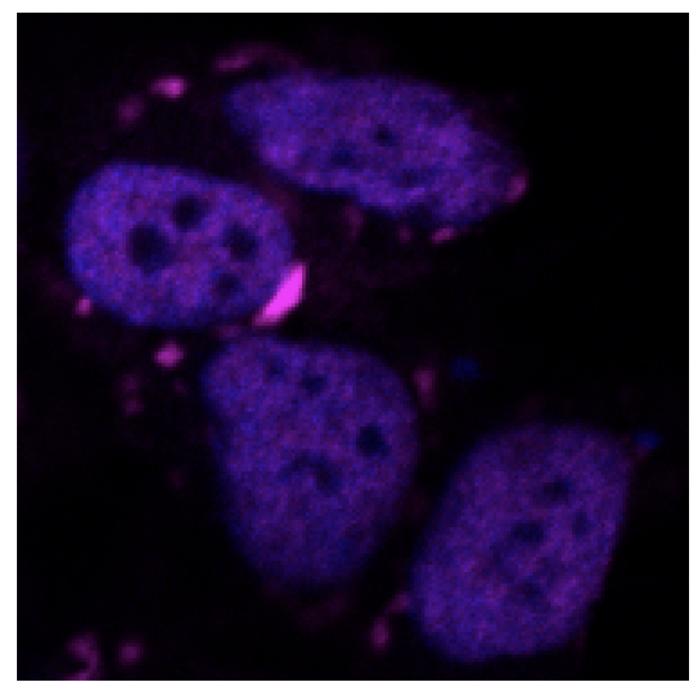Recent advances in the study of neurodegenerative diseases have unveiled the intricate relationship between protein behavior and the onset of ailments such as Amyotrophic Lateral Sclerosis (ALS), Parkinson’s, and Alzheimer’s disease. A groundbreaking machine-learning algorithm named catGRANULE 2.0 ROBOT, devised by a dedicated research team at the Italian Institute of Technology (IIT) in Genoa, aims to revolutionize our understanding of protein interactions within cells. Led by Principal Investigator Gian Gaetano Tartaglia, this pioneering work is poised to shift the paradigm in diagnosing and potentially treating these debilitating conditions that plague millions globally.
Neurodegenerative diseases represent a pressing health crisis, with projections estimating that roughly one million individuals in Italy alone are afflicted by such disorders. The economic ramifications are severe, given that the average lifetime cost of care for a single patient can soar to around seventy thousand euros. The IIT research group is immersing itself in the molecular intricacies of proteins that are vital for both healthy cellular function and the pathological processes leading to disease. Their work highlights the necessity of understanding the specific behaviors of proteins and how these behaviors contribute to the formation of toxic aggregates within cells.
As proteins operate in an intricate cellular environment, they possess the remarkable ability to create biomolecular condensates—entangled clumps that, under certain conditions, can become insoluble. Under optimal conditions, these condensates play a critical role in regulating protein production and cellular stress responses. However, disruptions in this condensation process can trigger pathological states where protein aggregates assume solid structures that accumulate within cells, leading to cellular death. Notably, Lewy bodies in Parkinson’s disease, filament accumulations linked to ALS, and amyloid plaques associated with Alzheimer’s are prime examples of such toxic aggregates.
Transitioning from a healthy state to a diseased state is frequently induced by structural changes in proteins. These alterations may result in the formation of new protein structures that convert biomolecular condensates into harmful aggregates. Under Tartaglia’s guidance, post-doctoral researchers Michele Monti and Jonathan Fiorentino have developed the catGRANULE 2.0 ROBOT to explore the pivotal link between protein structure mutations and condensate formation. This sophisticated machine-learning tool is adept at identifying potentially harmful proteins, thereby paving the way for future research and targeted therapies.
Tartaglia emphasizes the significant implications of their research, stating, “Identifying biochemical signals associated with neurodegenerative diseases is essential for early interventions to mitigate cognitive decline.” The algorithm has been meticulously trained to discern the formation of condensates, which often serve as precursors to the development of toxic aggregates. A notable factor in this transition is the interaction between proteins and RNA, which plays a crucial role in regulating the condensation process.
Understanding the physical-chemical mechanisms driving the formation of biomolecular condensates is integral to unraveling these complex diseases. Liquid-liquid phase separation emerges as a primary phenomenon by which certain proteins, equipped with three-dimensional structures conducive to this process, precipitate the formation of condensates. RNA also wields significant control over this process, either facilitating or hindering phase separation by its interactions with proteins.
Recognizing the importance of RNA-protein interactions, the research group has trained the catGRANULE 2.0 ROBOT to leverage this crucial parameter in assessing the potential for biomolecular condensate formation. The algorithm meticulously analyzes the structure of proteins, evaluating their amino acid sequences alongside their affinity for RNA, allowing researchers to predict whether proteins could form toxic condensates during phase separation events. Through the ROBOT methodology, they investigate how mutations influence liquid-liquid phase separation, as alterations in protein structure can disrupt RNA interactions and provoke pathological outcomes by affecting condensate formation.
This cutting-edge research is carried out in conjunction with the IVBM-4PAP project—an initiative aiming to devise the In-Vivo Brillouin Microscope (IVBM), a revolutionary tool designed to identify new therapeutic targets for the treatment of neurodegenerative diseases. The IVBM intends to measure the properties of proteins and condensates within living cells in real-time, minimizing external interference during the observation process. The foundational work conducted by catGRANULE 2.0 ROBOT provides theoretical insights into which proteins and mutations could be essential, with the microscope serving as a means to validate these predictions via real-time observations of cellular behavior and protein-RNA interactions.
The fusion of computational predictions derived from the algorithm with empirical methodologies established at the IVBM offers researchers a robust framework for identifying early pathological signals. This integrative approach has the potential to usher in a new era of therapeutic strategies aimed at decelerating the progression of neurodegenerative diseases, ultimately striving to alleviate their long-term impacts on healthcare systems and the lives of affected individuals.
The IVBM-4PAP consortium comprises several notable institutions, including the Center for Life Nano and Neuro-Science and the RNA Systems Biology Lab of IIT, the University of Trento, Universidad Zaragoza, the ImHorPhen group of Angers University, and the biotech firm Crest Optics. This collaboration embodies the interdisciplinary effort required to tackle the multifaceted challenges posed by neurodegenerative diseases, fostering a comprehensive understanding of cellular processes and therapeutic avenues.
With the catGRANULE 2.0 ROBOT algorithm freely available, researchers worldwide can leverage this powerful tool to further elucidate the complexities of protein behavior in the context of disease. As efforts to unlock the secrets of neurodegenerative diseases continue, the implications of this groundbreaking research may resonate profoundly, offering hope for innovative therapies and improved patient outcomes in the years to come.
Subject of Research: Protein behavior and its link to neurodegenerative diseases
Article Title: catGRANULE 2.0: accurate predictions of liquid-liquid phase separating proteins at single amino acid resolution
News Publication Date: 1 April 2025
Web References: Genome Biology Article
References: DOI: 10.1186/s13059-025-03497-7
Image Credits: Credit: IIT-Istituto Italiano di Tecnologia
Keywords: Neurodegenerative diseases, machine learning, protein aggregates, condensates, RNA interaction, Alzheimer’s, Parkinson’s, ALS, therapeutic targets.




